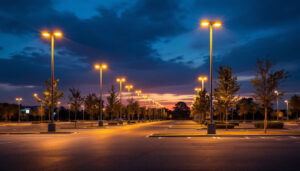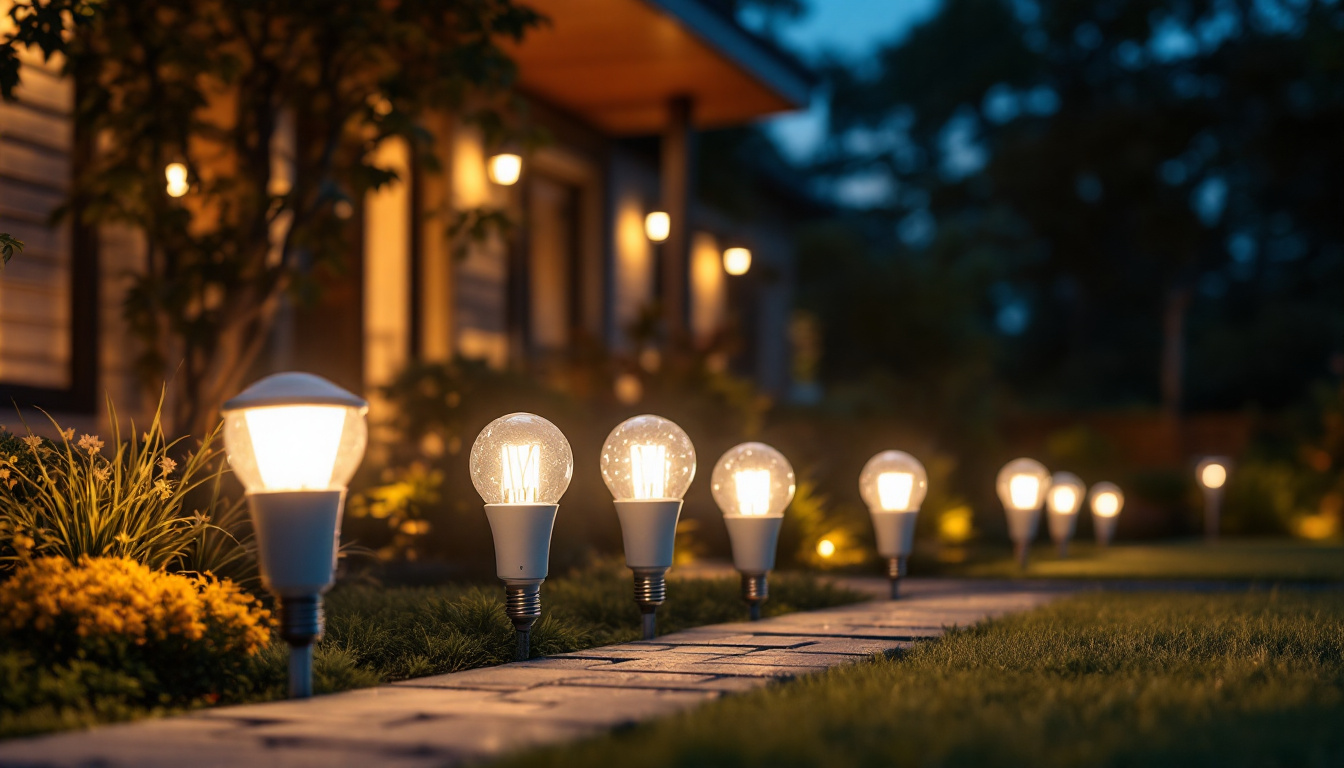

In the ever-evolving world of lighting design and installation, automated lighting systems have emerged as a game-changer for both residential and commercial projects. For lighting contractors, understanding the intricacies of these systems is essential to meet client demands and stay competitive in the market. This article provides valuable insights and practical advice for lighting contractors looking to incorporate automated lighting into their offerings.
Automated lighting systems utilize technology to control lighting fixtures, enabling users to adjust brightness, color, and even the timing of lights based on their preferences or needs. These systems can be integrated with smart home devices, allowing for seamless control through smartphones, tablets, or voice commands. Understanding the fundamental components of these systems is crucial for any lighting contractor.
Automated lighting systems typically consist of several key components, including smart bulbs, sensors, controllers, and software. Smart bulbs are equipped with wireless technology, allowing them to connect to a network and be controlled remotely. Sensors can detect motion, ambient light, or occupancy, ensuring that lights are only active when needed, which enhances energy efficiency.
Controllers serve as the hub for managing the various components of the system. They can be standalone devices or integrated into a larger home automation system. Software applications enable users to customize settings, create schedules, and monitor energy usage. Understanding how these components interact is vital for effective installation and troubleshooting.
For clients, automated lighting offers numerous benefits, including enhanced convenience, energy savings, and improved security. By allowing users to control lighting remotely or set specific schedules, automated systems can significantly reduce energy consumption. Additionally, the ability to program lights to simulate occupancy can deter potential intruders, providing an added layer of security.
From a contractor’s perspective, offering automated lighting solutions can differentiate services in a competitive market. As more clients seek smart home technologies, having expertise in automated lighting can lead to increased project opportunities and higher customer satisfaction.
Moreover, automated lighting systems can contribute to creating a more personalized living environment. With the ability to adjust colors and brightness, users can set the mood for various activities, whether it’s a cozy movie night or an energizing morning routine. This customization not only enhances the aesthetic appeal of a space but also promotes well-being by allowing individuals to tailor their lighting to their specific emotional and physical needs.
In addition to residential applications, automated lighting systems are increasingly being adopted in commercial settings. Businesses can utilize these systems to create dynamic lighting environments that enhance productivity and employee satisfaction. For instance, adjustable lighting can help reduce eye strain in office settings, while programmable lighting in retail spaces can highlight products and create an inviting atmosphere for customers. As the demand for smart solutions continues to grow, contractors who are knowledgeable about automated lighting will find themselves at the forefront of this evolving industry.
Installing automated lighting systems requires careful planning and execution. Contractors must consider various factors, including the type of system, compatibility with existing infrastructure, and client preferences. Here are some essential considerations to keep in mind during the installation process.
Before beginning any installation, it is crucial to assess the specific needs and preferences of the client. This involves discussing their lifestyle, usage patterns, and desired features. For instance, a family with young children may prioritize safety features and ease of use, while a tech-savvy client may seek advanced customization options.
Understanding these needs will guide the selection of appropriate components and help tailor the system to provide maximum benefit. Additionally, engaging clients in the decision-making process fosters trust and satisfaction, as they feel their preferences are being prioritized. It is also beneficial to educate clients about the various functionalities available, such as scheduling, remote access, and energy monitoring, which can enhance their overall experience and satisfaction with the system. By providing a comprehensive overview of options, contractors can empower clients to make informed decisions that align with their lifestyle and values.
Another critical aspect of installation is ensuring compatibility with existing electrical systems and devices. Automated lighting systems can vary significantly in terms of technology and protocols, such as Zigbee, Z-Wave, or Wi-Fi. Contractors should evaluate the current infrastructure to determine the best approach for integration.
In some cases, retrofitting may be necessary, requiring additional wiring or the installation of new fixtures. Being transparent about these requirements with clients can help manage expectations and avoid potential misunderstandings during the installation process. Furthermore, it is essential to consider the scalability of the system. Clients may wish to expand their automated lighting in the future, so selecting components that can easily integrate with additional devices or systems will save time and resources down the line. By planning for future upgrades, contractors can provide a more sustainable solution that adapts to the evolving needs of the client.
Once the installation is complete, programming and customization are essential to maximize the effectiveness of the automated lighting system. This step involves setting up schedules, creating scenes, and integrating with other smart home devices.
Lighting scenes are pre-set configurations that adjust multiple lights to specific settings with a single command. For example, a “Movie Night” scene may dim the lights and change the color temperature to create a cozy atmosphere. Contractors should work closely with clients to develop scenes that align with their daily routines and activities.
Additionally, educating clients on how to modify these scenes can empower them to take full advantage of their automated lighting systems. Providing user-friendly guides or tutorials can enhance the client experience and reduce the likelihood of support calls post-installation.
Many automated lighting systems offer advanced features such as geofencing, which adjusts lighting based on the user’s location. For example, lights can turn on automatically when a homeowner approaches their residence or turn off when they leave. Educating clients about these features can enhance their experience and promote energy efficiency.
Contractors should also emphasize the importance of regular updates and maintenance to ensure that the system continues to function optimally. This may include checking for software updates, recalibrating sensors, or replacing bulbs as needed.
While automated lighting systems provide numerous benefits, they are not without challenges. Contractors must be prepared to address common issues that may arise during installation or operation. Here are some challenges and potential solutions.
Technical difficulties can arise during installation, particularly when integrating various components or troubleshooting connectivity issues. Contractors should have a solid understanding of the technology and be equipped with the necessary tools to diagnose and resolve problems efficiently.
Maintaining open communication with manufacturers and suppliers can also provide valuable support in overcoming technical challenges. Additionally, investing in ongoing training and education can help contractors stay updated on the latest advancements in automated lighting technology.
One of the most significant challenges contractors face is ensuring that clients understand how to use their automated lighting systems effectively. Providing comprehensive training and support is essential for client satisfaction and long-term success.
Contractors should consider offering follow-up consultations or support services to address any questions or concerns that may arise after installation. This ongoing relationship can lead to repeat business and referrals, as satisfied clients are more likely to recommend services to others.
The landscape of automated lighting is continually evolving, with new technologies and trends emerging regularly. Staying informed about these developments can help contractors remain competitive and provide cutting-edge solutions to clients.
As smart home technology becomes increasingly prevalent, the integration of automated lighting systems with other devices will continue to grow. This includes compatibility with security systems, thermostats, and voice-activated assistants. Contractors should be proactive in learning about these integrations to offer comprehensive solutions that enhance the overall smart home experience.
Moreover, understanding how to navigate the various ecosystems, such as Apple HomeKit, Google Home, or Amazon Alexa, can provide contractors with a competitive edge. Clients often appreciate contractors who can offer guidance on the best products and systems that work harmoniously together.
With a growing emphasis on sustainability, automated lighting systems are increasingly designed to promote energy efficiency. Features such as adaptive lighting, which adjusts based on natural light levels, are becoming more common. Contractors should highlight these benefits to clients, as they align with the broader trend of environmentally conscious living.
Additionally, staying informed about energy-efficient products and practices can enhance a contractor’s reputation as a knowledgeable and responsible provider. This can lead to increased demand for services as clients seek to reduce their environmental impact.
Automated lighting systems represent a significant opportunity for lighting contractors to enhance their service offerings and meet the evolving needs of clients. By understanding the technology, addressing installation considerations, and staying informed about industry trends, contractors can position themselves as experts in this growing field.
Ultimately, the key to success lies in effective communication, ongoing education, and a commitment to providing exceptional service. By embracing the potential of automated lighting, contractors can not only improve their business prospects but also contribute to the creation of smarter, more efficient living and working environments.
Ready to take your lighting projects to the next level? At LumenWholesale, we provide lighting contractors like you with the highest quality, spec-grade automated lighting products at unbeatable wholesale prices. Say goodbye to local distributor markups and hello to our extensive selection that meets rigorous industry standards. With free shipping on bulk orders, you can trust that you’re getting premium lighting solutions at the best value — no hidden fees, no compromises. Elevate your service offerings with the perfect blend of quality, affordability, and convenience. Wholesale Lighting at the Best Value is just a click away. Join the LumenWholesale family and light up your business prospects today!

Discover the common pitfalls lighting contractors face when determining the number of fixtures needed for warehouse spaces.

Discover why purchasing island lights in bulk from local distributors might not be the best choice.

Discover the latest trends in outdoor LED flood light bulbs that every lighting contractor needs to know.

Discover essential insights from lighting contractors on choosing the perfect warehouse lamps.
Get notified when NEW deals are released.
Optimize your budget with wholesale discounts.
Only top-quality, specification-grade lighting products.
No additional costs at checkout - what you see is what you pay.
We understand the unique needs of contractors.